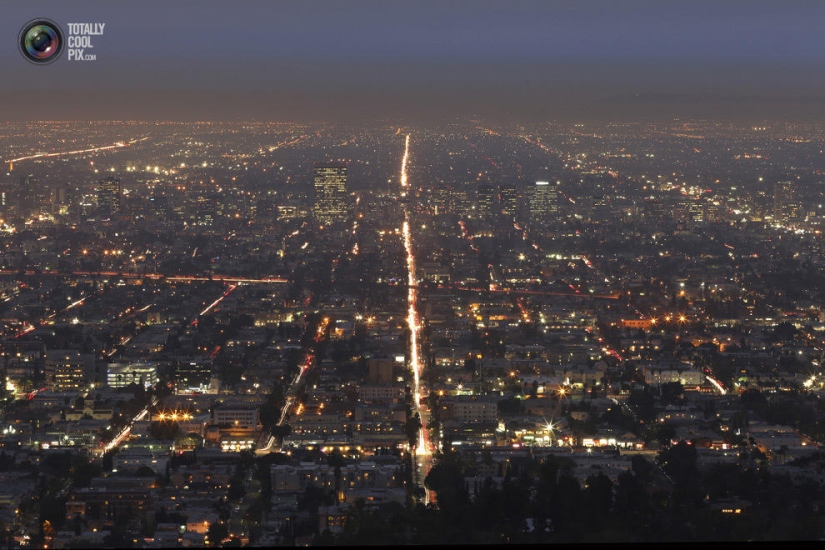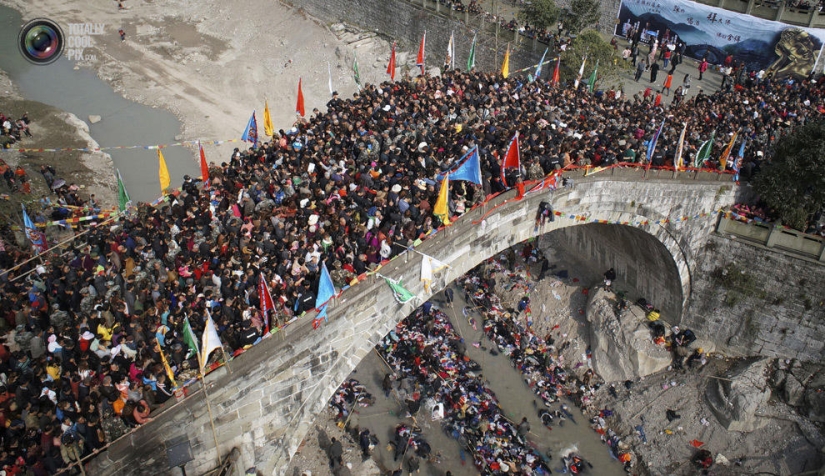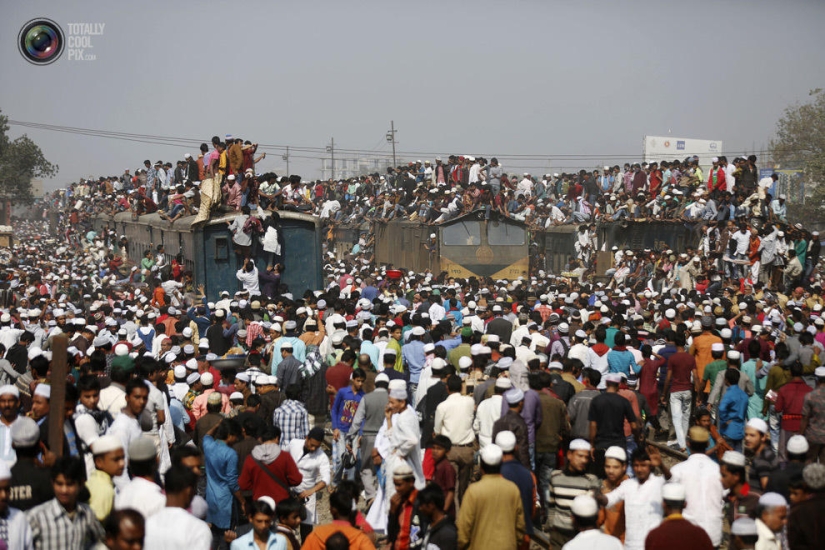We became too much, and it is impossible to change
Categories: World
By Pictolic https://pictolic.com/article/we-became-too-much-and-it-is-impossible-to-change.htmlPeople, people, people... people Everywhere. And in this issue, too, because it is dedicated to the fact that on Earth there are fewer places where there is no us. Compare this with what we see now during the quarantine.
The Earth's population is growing by the hour. Humanity has exceeded 7 billion and stop, looks like we're not going to. Of course, life is beautiful, civilization develops, people are born and die, the cycle time is its constant speed. And yet, sometimes we want to loneliness — from the rest of people, from the hustle and bustle of human presence. However, every year it gets harder because people are everywhere, and they will not run away!
The third world war, global pandemic and a sharp birth control can stop the rapid growth of the population of Earth, scientists say.


People relax on the beach in Qingdao, China. (China Daily / Reuters)
As shown by the Australian demographers computer models of the Earth's population, the ultrafast growth of humanity is impossible to stop in principle — it will not be able to make a third world war with millions of casualties 500 or sverhsekretnyj epidemic diseases that claim hundreds of millions of lives, no strict population control at the global level.

People sunbathing on the beach in Travemunde, Germany. (Morris MacMatzen / Reuters)
In all these cases, the number of inhabitants of the Earth to the end of this century will reach 9-10 billion, which is close to the limits of the load, which can withstand the planet's ecosystems.

People trying to squeeze into the train in the city of Depok in West Java province, Indonesia. (Crack Palinggi / Reuters)
"The population of the entire planet as a whole has grown so fast over the last century, approximately 14% of the total number of people ever existed on Earth, are our contemporaries that at the same time striking and sobering us. We and the rest of the world demographers believe that such growth is unsustainable and harmful to the planet for a number of reasons. The most important of them is the damage that such growth causes ecology and the environment, and the need to feed this many people," explains Corey Bradshaw of the University of Adelaide (Australia), one of the authors of the article.

Residential building in Hong Kong. (Bobby Yip / Reuters)
Bradshaw and his colleague at the University climate scientist Barry brook, wondered how effective the current demographic policy adopted in China and some other countries in the world. In addition, they tested whether it is possible to prevent the overpopulation of the planet and avoid its environmental, economic and social consequences, which first began to speak in the late eighteenth century, the founder of the demographics of the English economist Thomas Malthus.

Pedestrians on the move in Hong Kong. (Bobby Yip / Reuters)
In the first place scholars interested in the population of the Earth by the year 2100 or its age and sex composition, and how growth will affect the ecosystem and the overall condition of the environment. The entire biosphere of the planet to simulate extremely difficult, even using the most powerful supercomputers in the world, and therefore the Australian demographers limited to 35 key parts of the world where there is a huge number of species of animals and plants. These regions, the so-called "pockets of biodiversity", was made available in 1988, the well-known British environmentalist Norman Myers, and today, their flora and fauna quickly get poorer because of contact with humans and climate change.

View Los Angeles, USA. (Jonathan Alcorn / Reuters)
To check the corners of the Earth will respond to future global population growth, brook and Bradshaw has created several mathematical models describing the growth of humanity over the next hundred years under different limiting conditions, and implemented in computer programs. Watching the work of these algorithms, demographers have tried to understand how humanity will react to various social and environmental change and turmoil, and that will endanger his well-being in the near future.

Spectators at the races Cheltenham in Gloucestershire in the West of England. (Toby Melville / Reuters)
Among them were relatively innocuous things, such as limiting the maximum number of children in the family for example, the policy of "one child" in the PRC, and various natural disasters and catastrophes — large-scale military conflict or a global epidemic of deadly diseases. One of the other models included climate catastrophe that has led to a marked decrease in soil fertility, chronic lack of food around the world and a sharp rise in child mortality.

Hindus celebrate Holi near the temple in Ahmedabad, India. (Amit Dave / Reuters)
When the authors compared the results of these models with conventional notions of how to grow the population of the planet in the next 100 years, there were several extremely unusual and disturbing discoveries. First, scientists have found that measures to limit the birth rate will not help us to bring down the population growth rate in the short term — the number of people on Earth will reach 8-9 billion, even if the governments of all countries in the world forbid the families to have more than one child. As emphasized by Bradshaw and brook, the positive effect of such restrictions is certainly present, but it will be noticeable only in the distant future and is unlikely to lead humanity to a coveted demographic "unit" — equality in the number of births and dying people.

People gathered on a bridge in Mianyang, China. (China Stringer Network / Reut / Reuters)
"We found that two key action today — an effective birth control and learning the basics of sexual literacy — the ability to limit the rate of growth of the population and to reduce the pressure on environmental resources in the long run. In the end, only our prepreparatory will be able to reap the benefits of such a policy, and the lives of our contemporaries, it is practically not affected," adds Brooke.

The pilgrims gathered near the sanctuary of divine Mercy in Krakow to celebrate the canonization of Pope John Paul II. (Poland STRINGER / Reuters)
According to him, the global disaster of natural or human nature will not lead to the "demographic pipeline" and reduce the speed of growth of the world population. In one of the models leading powers of the world arranged in 2050-2055 years of world war III with the total number of casualties that exceed military and civilian losses in the previous two wars, which was approximately 500 million people. Despite this, the total population of the Earth to the beginning of the XXII century there were "only" 9.9 billion people, and the growth rate of the population was the same as in the current demographic forecasts.

Spectators watching the fight between Floyd Mayweather and Maidana Marcos. (USA Today Sports / Reuters)
"We were really surprised that the five-year scenario of the third world war, which was similar in scope and losses on a combination of the previous two, was a subtle point, little distortion for smooth lines curve demographic evolution of mankind," says climatologist.

People waiting for train at metro station in the centre of são Paulo, Brazil. (Nacho Doce / Reuters)
Similar results were obtained in cases where a virtual "residents" of the models was experiencing a global epidemic of a new strain of influenza, similar in lethality to the "Spanish flu" of 1918. Puzzled scientists decided to raise the bar even higher casualties and "killed" nearly two billion people in the middle of the century during the same war, and then picked it up, increasing the number of losses of up to six billion and bringing the conflict to 10 years ago, in the year 2041.

Passengers disembark from a suburban trains during the morning rush hour at the station in Mumbai, India. (Vivek Prakash / Reuters)
In all cases, humanity has survived all these difficulties, and growth rate of the population has not changed, resulting in an 8.5−12 billion people on Earth by the beginning of the XXII century, even for military scenarios. Only in the case of the six billion of the victims of the world's population was less than it is today — his overall strength was 5.5 billion, and it grew at the same rate as today.

Crowded train departs from the airport on the outskirts of Dhaka, Bangladesh. (Rafiquar Rahman / Reuters)
According to the authors, this indicates that the ultra-fast growth rate of the population is virtually impossible to knock down with political reforms in the next 50-100 years. For this reason, scientists and policymakers should focus on how humanity can lower its resource appetites and how we can raise the share of renewable energy and recyclable materials in society and industry.

Applicants came to pass the entrance exam to graduate school in Wuhan, China. (Stringer Shanghai / Reuters)
Otherwise, even with a relatively modest projections for population growth, species richness in almost all 35 foci of biodiversity is significantly reduced due to the fact that they are very close to those regions of the world where you will experience the greatest population growth. Most of all it will affect East Africa and the territory adjacent to the Western Pacific ocean.

Train station in Manila, Philippines. (John Javellana / Reuters)
"I often deliver public lectures on the political measures should be taken to combat climate change, and audiences ever comes to one and the same question: why do we ignore the "elephant in a China shop" — the size of the population. However, as clearly shown by our model, the problem of the unstoppable growth of humanity and related sustainable development issues cannot be solved using any hasty reforms in the field of demography," says Brooke.

Applicants at the job fair in Chongqing, China. (Shi Tou / Reuters)

Overcrowded train approaches a railway station in Dhaka, Bangladesh. (Andrew Designed / Reuters)

The Muslims out of the mosque after prayers during the celebration of Eid al-Adha in Kathmandu, Nepal. (Navesh Chitrakar / Reuters)

People on the beach in Dalian, China. (China Stringer Network / Reut / Reuters)

View of Cairo from the plane. (Amr Dalsh / Reuters)

The priests profess parishioners during a Catholic mass in Madrid, Spain. (Susana Vera / Reuters)

Lifeguards watching the people who came to the beach to celebrate New year in Durban, South Africa. (Rogan Ward / Reuters)

Overcrowded trains from dinajpur to Dhaka. (Andrew Designed / Reuters)

Hindus worship the Sun God Surya on the banks of the Ganges river during the celebration of Chacha in Patna, India. (India Stringer / Reuters)

Fans watch the match between the teams of "San Lorenzo de Almagro and Estudiantes" in Buenos Aires, Argentina. (Marcos Brindicci / Reuters)

Bathers in wave pool on a hot day in the County Dain city district of Suining, Sichuan province, China. (Infor China Daily / Reuters)

Clothes drying on balconies in a student residence in Wuhan in Hubei province, China. (Stringer Shanghai / Reuters)

People watching the fight between Filipino Manny Pacquiao and Briton Ricky Hatton in Tondo, Philippines. (John Javellana / Reuters)

Motorcyclists are at a crossroads in rush hour in Taipei, Taiwan. (Nicky Loh / Reuters)
Keywords: World | People | Population | Demography
Post News ArticleRecent articles

Thailand is a kingdom of amazing beauty, where the colors of nature mingle in a captivating palette of rich and varied landscapes. ...

Hamsters are one of the cutest animals in the world, and they are quite easy to keep. No wonder they are so popular. We have ...
Related articles

Funerary implements in archaeology and anthropology are objects that were buried with the body, and researchers have learned quite ...

Walking through this picturesque bridges, you can admire the views from these stunning views and breathtaking landscapes. We invite ...

Not all the house where they filmed the cult movies and TV shows, become "house-museums". Many of them are then sold as the ...

May West once jokingly said that she should be given a license to invent sex, which she discovered for Americans. The name of this ...